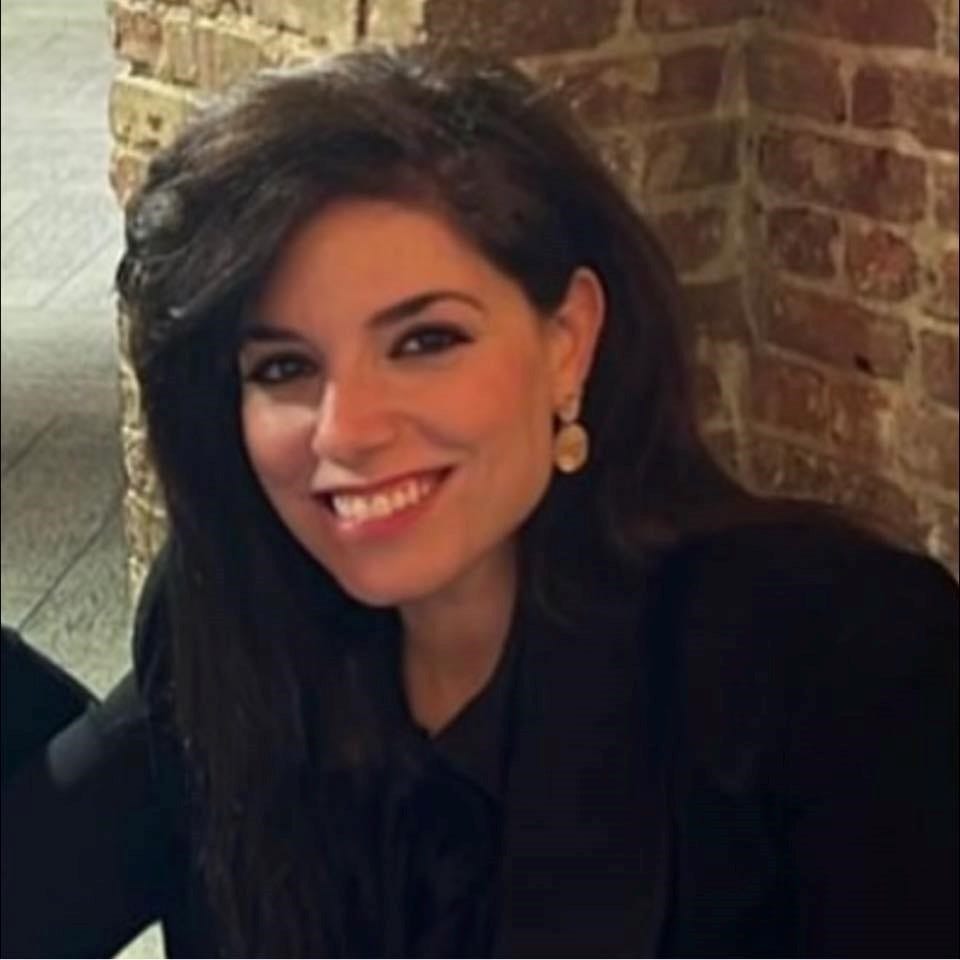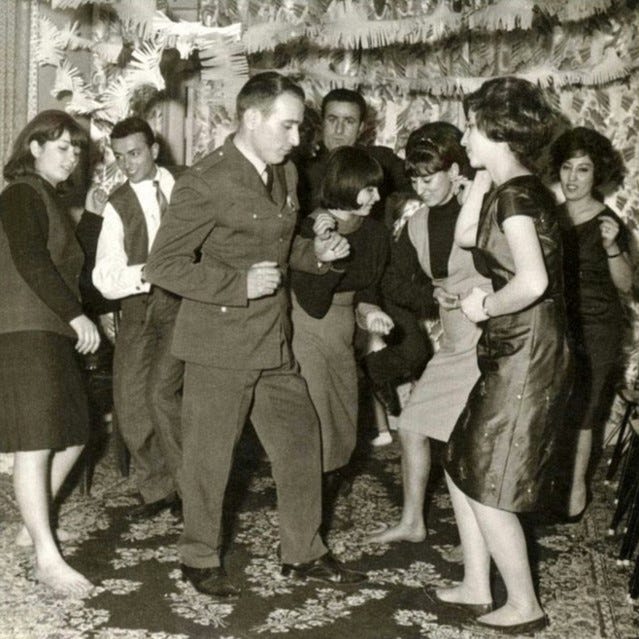The Secret History of Iran's Mashhadi Jews
History, a story, and a recipe in honor of Mizrahi Heritage Month.
Salam Aleikum (Peace be onto you)! My name is Nabila Levian and I am a first-generation Iranian Jew.
I work with Miranda and when she asked me to write about my Iranian culture and heritage, which makes up roughly 2% of global Jewry, I was excited to say yes, especially given that November is Mizrahi Heritage Month. Mizrahi Jews are Jews from the Middle East and North Africa.
Jews have been living in what is now Iran since the Babylonian Exile in the 6th Century BCE. Many are from all over Iran — Tehran, Shiraz, etc. My family comes from Mashhad, a city in northeast Iran.
The History
Jews have been living in Mashhad since the 1740s, when the Persian king, Nader Shah, invaded and defeated the Mughal Empire. To develop industry and commerce, he relocated 40 Jewish families, known for their honesty and loyalty, from Qazvin to Mashhad.
Nader Shah helped the Jews there prosper and invited their extended families from Qazvin, Kalat, and Sabzevar to join them. Nader Shah had many enemies though. In 1747, the king was assassinated. As a result, the Jews lost their primary support in the government. This was when things took a turn for the worse and they were openly mistreated by the local Muslims.
The Jewish Quarter
After Nader Shah’s death, Jews were only permitted to live right outside the city wall. Some years later, they allowed the Jews to buy land just inside the wall. This section became known as the Jewish quarter, Eidgah.
Much like during the times of World War II, the Jews had to wear identifying marks on their clothes to distinguish them from the general public. They weren’t allowed to enter holy places of the Muslims, nor use public bath houses. They had to pay high taxes and had many other restrictions. In addition, they were often attacked in the streets for no reason other than being Jewish. They were not allowed to defend themselves in front of judges and in the courts of law either.
The Shiite Muslims resented the prosperous Jews and on March 27, 1839, initiated a devasting pogrom on the Jewish community three days before Pesach. During the mob attack, 400 Jews were attacked, approximately 36 Jews were killed, and 7 Jewish girls were abducted to become Muslim child brides. Sefer Torahs were desecrated.
Two Faiths, Two Cultures
To save their own lives, some Jews converted to Islam in what was called Allah-Dadi (God’s Judgment). Officers were assigned to watch over them to make sure they didn’t practice their old faith. Jews who returned to their old faith received the death penalty.
That didn’t stop them from practicing Judaism, though. Much like in the story of Hanukkah, people smuggled in Sefer Torahs and gathered secretly in basements. People risked their lives studying in secret schools, keeping Hebrew and Judaism alive in the community. They had secret Brit Mila ceremonies, Mikvehs, and even baked matza in secrecy so as not to eat chametz on Pesach. This secret double life lasted nearly 100 years.
Their situation improved in 1925, when Reza Shah, the head of the Pahlavi dynasty, ascended the throne and became the new Shah of Iran. He implemented modernizing reforms which greatly improved the lives of the Jews. Religious freedom was granted to all minorities which lead to great rejoicing in Eidgah.
Chaos Once Again…
However, Pesach of 1946 brought a second blood libel that befell the Jews of Mashhad. A fanatical mob, inspired by Nazi Germany, accused the Mashhadi Jews of using Muslim children’s blood to make their matzah. Realizing they were no longer welcome in Mashhad, the Jews relocated to Tehran. By 1956, approximately 2,000 Mashhadi Jews had settled in Tehran. Some left Iran completely and emigrated to Israel instead.
Life in Tehran
Shah Mohammed Rezah Pahlavi succeeded his father as king and treated the Jews respectfully, allowing them to practice their faith freely. The Jews thrived once again, establishing synagogues and working in the importing/exporting of rugs, textiles, and jewelry, some of which the king purchased from Jews for his wife.
By the late 1960s, the king modernized Tehran, establishing shopping centers, and no longer forcing women to wear “chadors” (traditional head coverings). It would have been easy for Jews to assimilate then, but they made sure to maintain their religion and customs.
Power of Evil: Iranian Revolution of 1979
In the late 1970s, a group of Islamic Revolutionists began to emerge in Tehran and were forcefully against the modernization of Iran. In 1979, just as the Mashhadi Jews of Iran had finally become financially established, religiously comfortable, and outwardly proud of their traditions, the Supreme Leader of the Islamic Revolutionists, Ayatollah Ruhollah Khomeini (a Shia cleric), decided to take matters into his own hands and started dangerous, violent, and often very deadly attacks in the streets of Iran.
Islamic fundamentalists believed that the Shah of Iran was responsible for the modernization of their country. As a result, he was officially overthrown from his kingship on January 16, 1979. The Shah and his family fled from the country they had once brought peace and justice to, never to return. As Shah, he had recognized the State of Israel – something that was uncommon in those days, especially in that region.
After the Shah was overthrown, Ayatollah Khomeini and his followers sought to destroy other minority groups as well. In a matter of what seemed like a few short days’ notice, the Jewish community had to leave immediately. They had to leave in such a rush, that most families were forced to leave behind their properties, cars, businesses, jewels, family heirlooms, and other monetary and sentimental valuables, such as beloved synagogues and cemeteries.
New Beginnings in New York
By 1980, the Mashhadi Jews escaped Iran and dispersed all over the world. Some moved to Europe (London, Germany, Italy, Belgium) and Israel. Most moved to Queens, NY because they knew they could practice Judaism freely there.
They initially rented out the basement of an Ashkenazi synagogue in Kew Gardens. Many were uncomfortable because they felt that they were leaving behind their own unique history and heritage.
In 1983, the Mashhadi community obtained a property in Kew Gardens and built their very own Sephardic synagogue, Congregation Shaare Tova, and also purchased a very large section of Montefiore Cemetery, where community members were buried and continue to be buried there at present time.
Mashhadi Community Present Day
By the ‘90s, the Mashhadi community had adapted to their new environment. As businesses stabilized, and they experienced religious freedom, families decided to move to the suburbs and moved to Great Neck on Long Island. Today, the Great Neck community consists of approximately 7,000 individuals. We have three synagogues in Great Neck: Shaare Shalom, Ohr Esther, and Shaare Rachamim.
My Family’s Story
In the 1960-70s, Iran’s economy was doing well, and the country was thriving thanks to the Shah (the king, Mohammed Reza Pahlavi) at the time. My maternal grandfather, like many Iranian Jewish businessmen at the time owned his own jewelry business and was often selected by the advisors, closest to the king – to present jewelry to be purchased for the queen (Farah Diba).
When the Islamic Revolution had violently begun in 1979 and the Jewish families living in Tehran (and in other cities) realized that they were no longer safe, my grandfather (and many other men) decided to send his family ahead to America while he stay behind to close his businesses.
During this time, his competitors had told the Islamic Revolutionists about his business dealings with the Shah. On the very last day, when my grandfather was finally able to leave Iran (he headed to the airport with a bag of loose Jewels in his pocket), eagerly looking forward to reuniting with his family in New York, he boarded the plane, only to hear an announcement over the loud speaker that the plane would not take off until he would de-board the plane for some questioning by the authorities.
My grandfather knew it at that moment that he would soon experience his demise. He asked to use the restrooms in the airport before being detained, where he hid his bag of jewels, hoping to retrieve them again someday. My grandfather was beaten and arrested for life in prison for the mere reason that he was Jewish businessman who had sold Jewelry to the Shah & Queen of Iran.
A few other Jewish men who had stayed behind to close their businesses heard of my grandfather’s arrest and several weeks later, they dug him out from underneath his prison cell. In the dark of night, they had arranged for camel nightriders to take him into Turkey, where he was later able to fly to America and reunite with his family.
Unfortunately, many families experienced similar situations and trauma as a result of having to flee from the peaceful country they once knew & loved, under the regime of Shah Pahlavi.
Iranian Cultural Foods
Now onto the fun stuff! We make a delicious dessert for Purim (where the Purim story took place, as Esther & Mordechai are buried in Hamadan, Iran).
Authentic Persian Halva
This dish is often made for those who are breaking a fast, such as the Fast of Esther – it is very sweet and is used to replenish the body’s lack of energy while fasting. Served best with a cup of tea.
• 200g/7oz Whole wheat flour
• 110g/3.8oz Dark brown sugar
• 1/2 cup Rose water
• 1tsp Ground saffron
• 100g/3.8oz Water
• 100g/3.8oz Clarified butter
• A handful of almonds & pistachios for decoration
Make the syrup: Place the sugar and water in a saucepan and bring it to a simmer. Cook for 15 minutes. Add in the bloomed saffron and rosewater and cook for 3 more minutes. Turn the heat off and set the syrup aside.
Toast the flour: Heat a large pan over medium heat and toast the flour for 20 to 25 minutes until it smells nutty and the color is light to medium brown.
Butter and oil: Add in the butter and oil to the toasted flour and cook for 15 more minutes. This will form a roux that's smooth and has no lumps.
Syrup: Slowly add the syrup and stir well using a wooden spoon until the halva comes together. The mixture will be sticky.
Final mix: Set the spoon aside and start shaking the pan and tilting the halva from one side to the other until it separated from the pan and forms a roll.
Plate and serve: Transfer to a plate and smoothen the top with an oiled spoon. Top with ground pistachios, desiccated coconut, edible rose and slivered almonds
Shabbat Shalom!
Nabila
Miranda here: If you would like to share your family’s Jewish story or heritage, reply to this email and we can make it happen!






As always a delightful read and an education! Thanks, Miranda 🫶🏼
Thank you for sharing your colleague’s story!!!!